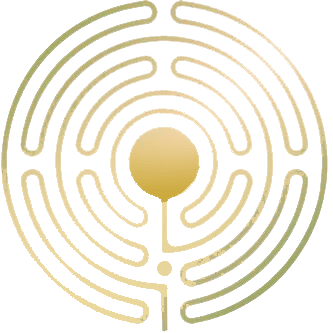- ROCKELLA- Art Crawl in -New York City- Brown Bear Studios
May 20-21, 2023
Winding Way
Pass-through labyrinths allow many people to experience
the rocking motion of a meandering path within a contained space.
A pause at any point can function as a center.
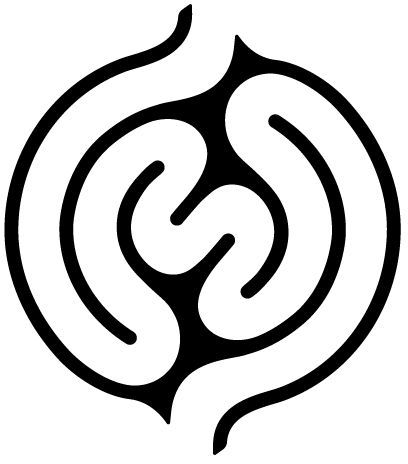
Winding Way was designed as a pass-through labyrinth to honor the victims and survivors of the 2004 Indonesian Tsunami. Blue tape was used to mark the path on a gazebo floor over a pond. The seven segments of this pass-through meander prepared the way for a peaceful meditation on the deck.

Circles
Labyrinths are places of containment for inner explorations. Like microscopic and telescopic images, labyrinths too, may be portals that allow new ways of perceiving the world.
Threshold Labyrinth
and its origins
The Threshold Labyrinth design grew out of a discovery that two separate patterns could be joined by minor adjustments in two lines. What began as the creation of walkable art for a hallway also became a room-sized piece on its own. Whether vertically aligned or side-by-side one can meander into a central threshold to go deeper.
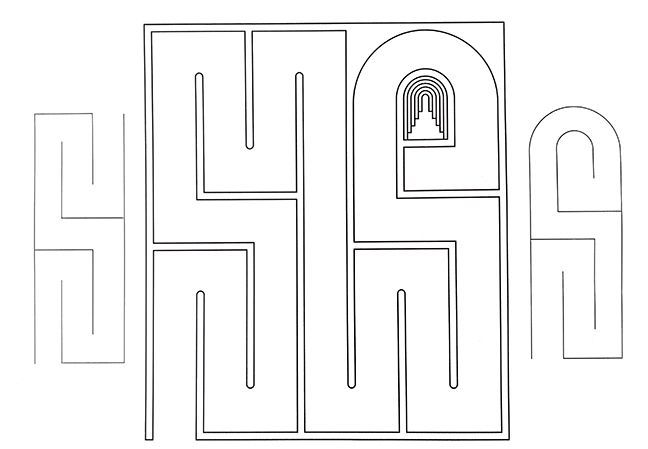
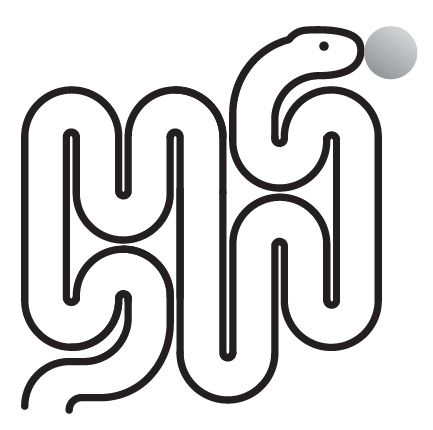
Lunar Serpent Labyrinth
This walking path arose from a deep study of Wolfgang von Goethe's fairy tale of the Green Snake and the Beautiful Lily, while also exploring the unwinding of circular labyrinths. It shows the "center" becoming a portal to another dimension.
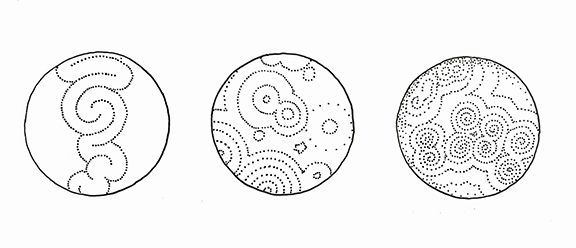
Elemental Designs
Meanders are produced as curling tubes form from the mixtures of lipids (fats) and water molecules as shown by
David Deamer and Peter Armstrong.
Three essential components of labyrinth design are found as images in physics lab microscopes.
Concentric circles and spirals emerge out of chaos during chemical reactions discovered by Belousov and Zhabotisnskii.
Fluid Forms

Formation of a meander pattern from two circles,
as drawn by Alex Champion.

From a Grave Stele (shaft grave Mycenae, c. 2000-15000 B.C.E.),
Mycenae National Museum, Athens
New Moon Cave Wave Labyrinth
Labyrinths derive from a folded meander.
This recently designed form derives from the influence of microscopic images of chemical reactions. It was designed as an initiatory path...
a cave for a movie set for The Manzanita Sisters film about honoring the Earth. When constructed it will be a 3-dimensional experiential art piece.
Stay tuned!
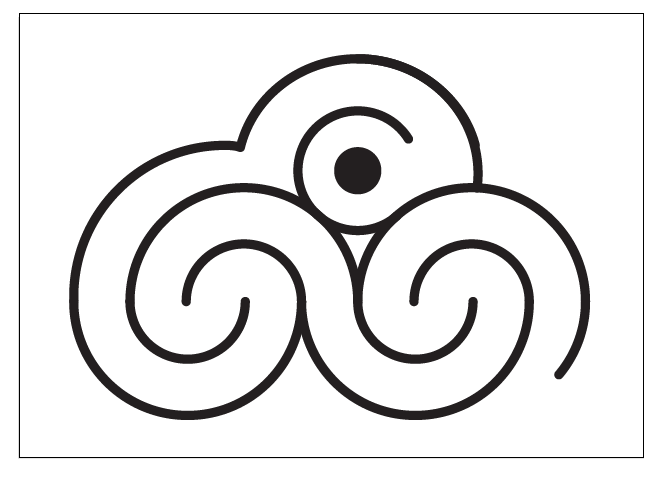
Ancestral Patterns
Geometric sources of some meanders
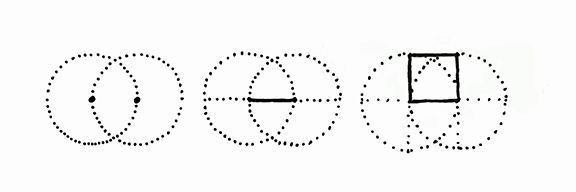
How to construct a square,
method from Euclid's ELEMENTS.
Michael Schneider in his book, A Beginners Guide To Constructing the Universe, demonstrates Euclid's method for constructing a square upon a given side. This book is an excellent introduction to geometric forms.
Evolution of a "Key" Meander
These geometric meander patterns were collected by James Romilly Allen in the 1880s and illustrated by Aidan Meehan in his book
Celtic Design: Maze Patterns. These designs are found world-wide and through many cultures.
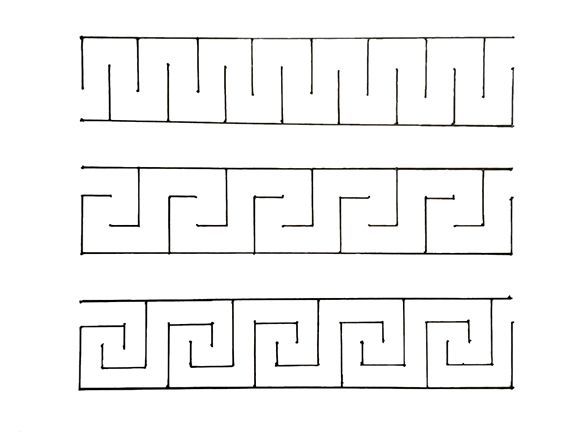
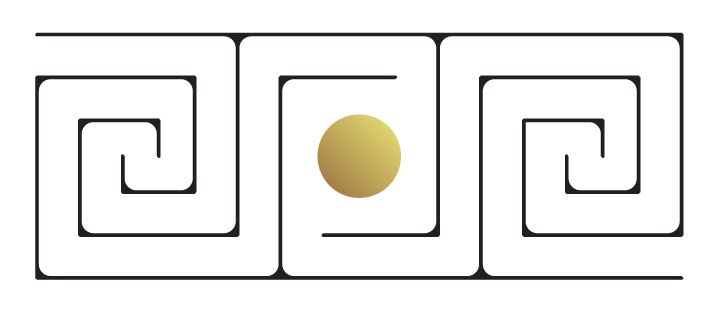
Solar Return Meander
Walk with hands, eyes, feet
as meandering patterns
reveal a path
This meander came about while designing a labyrinth for a grade school. A narrow playground area and COVID restrictions were taken into consideration. Children and adults can flow through the design with space between them, yet still on the path together. The "golden sun" at the center of the design allows for a moment of pause and centering before continuing on.
Rockella Panel Display
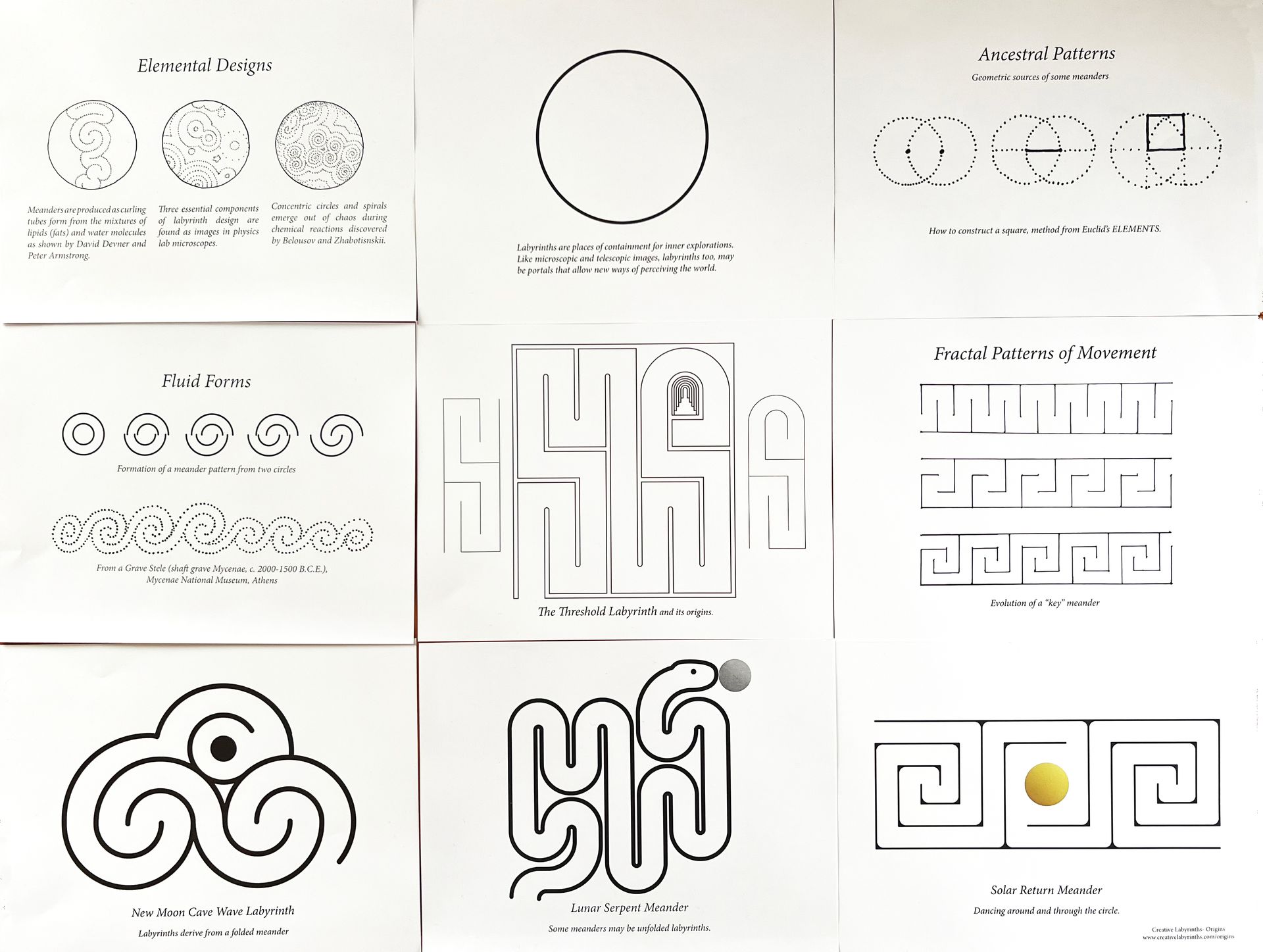
Painting the Winding Way Labyrinth at the entrance to the Brown Bear Studio
for the May 20-21, 2023, New York City, Rockella Art Crawl!
Video by Sarah Louis.
Our meanderings through these circles, spirals and angles have been inspired by the works of Jill Purce, Alex Champion, Patrick Conte, David Deamer & Peter Armstrong, Behlousov & Zhabotinskii, Michael Schneider, Aidan Meehan, Sig Lonegren, Frank Waters, Jeff Saward, Ancient labyrinth and maze makers, and many others. Equally important here is what has come to us internally from the inner listening that happens naturally, when working with labyrinths. The unseen realm is as important, if not more, than what we can see. We are currently adding more information to this page as we document the dance.
Join our Mailing List to receive Creative Labyrinth News!


